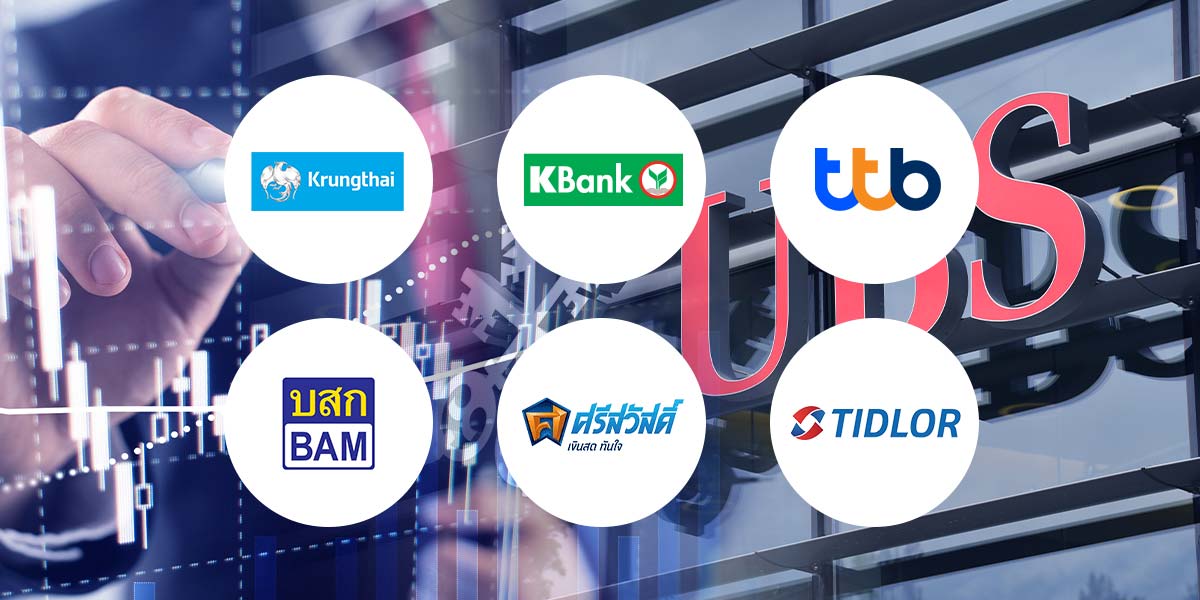UBS has reiterated its positive stance on the Thai financial sector, citing selective opportunities across banks and non-bank financial institutions (NBFIs). The Swiss investment bank outlines its top picks and investment rationale for major players in the sector, especially as the industry faces an evolving landscape in 2025.
Banking Sector
UBS places Krungthai Bank (KTB) with a “Buy” rating, citing the bank’s loan de-risking strategy and robust coverage ratio, with LLR/NPL exceeding 200%. UBS notes that potential gains from the ongoing Thai Airways debt restructuring could further support a sustainable decline in credit costs and lower non-performing asset impairment. The analysts expect these factors to drive above-peer profitability and maintain sustainable dividends per share (DPS) throughout 2025-2026.
Kasikornbank (KBANK) also earns a “Buy” recommendation. UBS comments that while economic uncertainties have delayed credit cost normalization to the medium term, the bank’s current shareholding situation could motivate further measures to enhance shareholder returns. Improvements in operating efficiency, prudent capital management, and unlocking value from subsidiaries are highlighted as key value drivers.
UBS turns constructive on TMBThanachart Bank (TTB), rating it a “Buy,” particularly after its recent share price correction, which has resulted in more attractive valuations and dividend yields. The possibility of additional share repurchases in early 2026 is seen as a potential catalyst for further upside.
Bangkok Bank (BBL) is rated “Neutral,” reflecting its under-owned status and lagging share price since 2024. UBS sees room for relative performance improvement if investors rotate out of outperforming banks but warns that quicker US interest rate cuts and higher Thai policy rate pass-through in 2026 may squeeze net interest margins (NIM). Concerns also stem from BBL’s higher operating costs and its conservative dividend policy, which could cap return on equity (ROE) and valuation.
TISCO Financial Group (TISCO) is also rated “Neutral.” While the firm offers a high and sustainable dividend yield around 8% for 2025-2026, UBS considers its valuation premium compared to bigger banks as a limiting factor. The analysts identify headwinds from the auto industry as potential medium- and long-term risks.
In contrast, Kiatnakin Phatra Bank (KKP) receives a “Sell” rating, with UBS stating that current valuations already reflect positive developments, such as its share buyback and recent profit recovery. UBS expects improvements in non-interest income (non-NII) and the reduction in losses on car repossessions to have peaked. Potential dilution from warrant exercises and heightened exposure to the used-car hire-purchase loan segment, along with auto industry risks, are listed as significant challenges.
Non-Bank Financial Institutions
Turning to NBFIs, UBS highlights Bangkok Commercial Asset Management (BAM) as a “Buy,” noting the return to attractive valuations and a sustainable 7% dividend yield forecast for 2025–2027. The bank sees renewed growth momentum from major non-performing loan (NPL) resolutions and new joint-venture AMC setups, especially in 2026, further supporting the recovery of return on equity.
Other preferred picks include Srisawad Corporation (SAWAD) (“Buy”), where UBS considers current valuations to be overly pessimistic about asset quality risk. A recovery in profitability and asset quality could drive profit growth of 10% in 2026.
For Ngern Tid Lor (TIDLOR), UBS expects double-digit profit growth—projected at 16% for 2026—supported by improved credit quality control. The recent removal of divestment risk overhang is seen bolstering its long-term premium valuation.
On the other hand, Muangthai Capital (MTC) is rated “Neutral” as its lofty valuation appears to have already priced in above-peer profit growth for 2025. UBS anticipates slower profit growth in 2026 due to a leveling off of NPL formation and limited cost-of-funds improvements.





